Borax is a naturally occurring mineral comprised of boron, sodium, oxygen, and water. It is also known as sodium borate, sodium tetraborate, or disodium tetraborate. It has a lengthy history of use in a variety of applications, such as cleaning, pesticides, and even some beauty products. However, there is considerable dispute over its safety and efficacy in skincare. Let's delve deeper into the subject to clear up any confusion about the use of borax in skincare. Many health professionals and dermatologists advise against using borax in skincare products due to these issues. Instead, they advocate for softer, safer options with demonstrated efficacy and fewer possible adverse effects. To address specific skin conditions without jeopardising your skin's health, look for skincare products that contain natural components such as plant extracts, essential oils, and other well-researched substances. Before experimenting with new products or chemicals, always consult with a dermatologist or skincare specialist, especially if you have sensitive skin or pre-existing skin issues. They can advise you on the optimal skincare routine for your skin type and issues.
Unveiling Borax: What Is It Exactly?
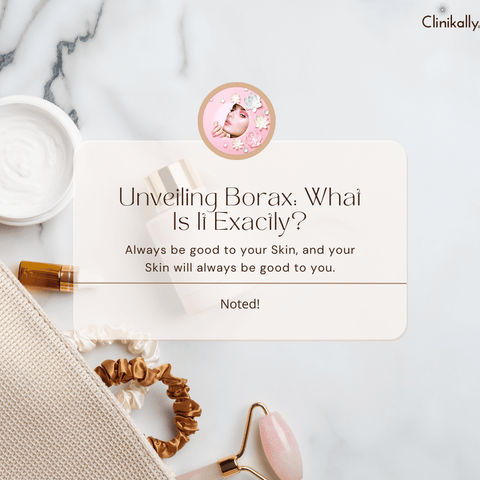
Borax, also known as sodium borate or sodium tetraborate in science, is a naturally occurring mineral compound. It has the chemical formula Na2B4O710H2O and is made up of boron, sodium, oxygen, and water molecules. Borax is a white crystalline powder or colorless crystal that is commonly found in arid locations such as deserts and dried lake beds. The word "borax" comes from the Arabic word "buraq," which means "white." For millennia, it has been utilised in a variety of applications, ranging from domestic cleaning and washing to industrial procedures. It has also made its way into cosmetics, pharmaceuticals, and agricultural items.
Borax is normally mined from mineral deposits, although it can also be synthesised by chemical reactions using boron-containing minerals. The largest known deposits of borax are in the United States, mainly in California's Mojave Desert, Turkey, and numerous South American areas. While borax has been used for a variety of purposes, its use in certain applications, particularly skincare, has prompted concerns regarding its toxicity and health risks, as indicated in the preceding comment. As a result, regulatory organisations and health experts have advised consumers to exercise caution while using borax in personal care and cosmetics.
The Composition of Borax
Borax, also referred to as sodium borate or sodium tetraborate, has a particular chemical makeup. Its chemical composition, Na2B4O710H2O, indicates that it is made up of two sodium (Na), four boron (B), seven oxygen (O), and ten water molecules (H2O) atoms. Let's break down the composition of borax:
-
Sodium (Na): There are two sodium atoms in borax. Sodium is a highly reactive alkali metal that occurs abundantly in nature, often in combination with other elements such as chlorine or boron.
-
Boron (B): Boron is a metalloid element that is essential to the production of borax. It is a necessary nutrient for plants and is used in a variety of industrial applications.
-
Oxygen (O): There are seven oxygen atoms in borax. Oxygen is a nonmetal element that is essential for life because it is a component of water and many organic compounds.
-
Water (H2O): Ten molecules of water are attached to the structure of borax. These water molecules are known as "water of crystallization" and are an essential component of the crystal lattice.
The presence of water molecules in the crystal structure of borax gives it its distinctive appearance and qualities. Borax crystals are white, colorless, or light-colored and soluble in water. When heated, borax can lose its crystallization water and become anhydrous. Borax's chemical structure enables it to have a wide range of practical applications, including cleaning, pest control, and industrial activities. However, as previously stated, its use in cosmetics and other applications has sparked worry due to potential toxicity and safety concerns. As a result, it is critical to use caution when using borax-containing products and to adhere to specified recommendations and expert advice.
The Historical Use of Borax
Borax has been used for thousands of years for a variety of purposes in various cultures. Here are some of the most important historical applications of borax:
-
Ancient Egypt: The ancient Egyptians used borax in the mummification process. It aided in the preservation of the deceased's body by acting as a desiccant, absorbing moisture, and inhibiting the growth of bacteria and fungi.
-
Traditional Chinese Medicine: For centuries, borax has been used in traditional Chinese medicine. It was used to treat skin conditions and eye infections as well as as an antiseptic.
-
Medicinal Uses in Persia and Arabia: Historical records show that borax was used for medicinal purposes in Persia (modern-day Iran) and Arabia. It was used to treat conditions like sore eyes, and skin diseases, and as a diuretic.
-
Medieval Europe: In medieval Europe, borax was used in alchemy and as a flux in metallurgy to facilitate the smelting of metals.
-
Cleaning and laundry: Borax has been used for a long time as a cleaning agent. It was widely used as a laundry booster and cleaning agent for various household surfaces in the nineteenth and early twentieth centuries.
-
Preserving Taxidermy Specimens: Taxidermists have used borax to preserve animal specimens by drying them and preventing decay.
-
Pest Control: Throughout the twentieth century, borax was used as a natural insecticide to control pests like ants and cockroaches.
-
Flame Retardant: Borax was used as a flame retardant in textiles and wood products in the mid-twentieth century.
-
Soap Manufacturing: Historically, borax was used in soap manufacturing to improve cleaning properties and create a firmer texture.
Borax in Skincare: The Known Benefits
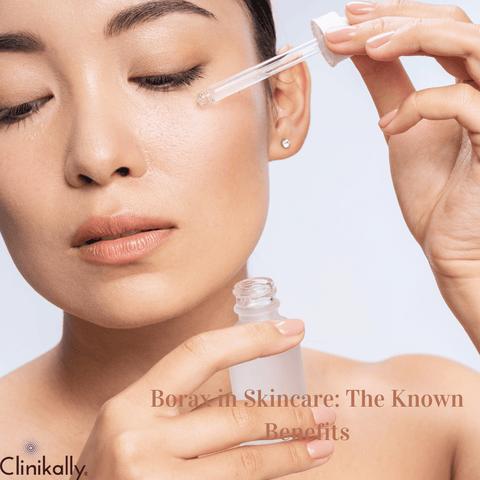
While borax has fallen out of favor in many skincare products due to safety concerns, it has been employed in particular formulas for specific purposes in the past. However, it's important to note that its use is debatable, and many professionals advise against using borax in skincare owing to potential hazards. That being stated, below are some of the proven benefits of borax in skincare:
-
Cleansing Properties: Borax has been used in skincare products as a cleansing agent, particularly in cleansers and exfoliants. It can assist in the removal of dirt, excess oil, and impurities from the skin.
-
pH Stabilisation: Borax can act as a buffering agent in skincare formulations, assisting in product pH stabilisation. Maintaining the proper pH is critical for the efficacy of skincare products and can have an impact on the skin's overall health.
-
Emulsifier: Borax can act as an emulsifier, assisting in the blend of oil and water-based ingredients in certain skincare products such as creams and lotions.
-
Properties as a Preservative: Borax has the ability to prolong the shelf life of some skincare products.
-
Antibacterial and antifungal properties: Borax has mild antibacterial and antifungal properties that may be useful in treating skin conditions such as acne and fungal infections.
Many regulatory authorities and health professionals advise against using borax in skincare products due to these risks. Instead, it is advised to use skincare products containing safe and established components, such as plant extracts, essential oils, and other well-researched compounds, to effectively address specific skin conditions without risking potential side effects. If you have any worries or concerns about using borax-containing skincare products, it is preferable to seek personalised advice and suggestions from a dermatologist or skincare professional.
Cleansing and Exfoliating Qualities
Borax has traditionally been utilised in several skincare products due to its cleaning and exfoliating effects. However, as previously stated, its use is controversial because of potential safety issues, and many experts advise avoiding its inclusion in skincare products due to its washing and exfoliating effects. Regardless of these possible benefits, it is critical to evaluate the safety issues related to the use of borax in skincare. Skin irritation, possible toxicity, and hormone disturbance are among the concerns. Because of these hazards, many skincare professionals recommend utilising alternate substances for cleansing and exfoliating to ensure the skin's safety and well-being.
Consider utilising moderate, sulfate-free cleansers to properly eliminate pollutants without causing irritation. Look for cleansers that have natural components that can soothe and nourish the skin, such as aloe vera, chamomile, or green tea. Choose products with milder exfoliants, such as alpha hydroxy acids (AHAs) or beta hydroxy acids (BHAs), such as glycolic acid or salicylic acid, for exfoliation. Chemical exfoliants are often gentler on the skin than physical exfoliants such as borax, which can be harsh and abrasive.
Borax and Skin Health
Borax is a source of debate and concern when it comes to skin health. While it has historically been used in several skincare products for its cleaning and exfoliating capabilities, its safety in skincare has been called into doubt due to potential hazards and negative effects. Here are some important points to consider when it comes to borax and skin health:
-
Skin Irritation: Borax can be irritating to the skin, especially if you have sensitive or easily irritated skin. It can cause redness, dryness, and irritation, which can aggravate pre-existing skin conditions.
-
Concerns about toxicity: When ingested or absorbed in large amounts through the skin, borax can be toxic. While small amounts may not cause immediate harm, repeated or prolonged exposure may pose health risks.
-
Hormonal Disruption: Borax has been linked to hormonal disruption, specifically affecting thyroid function. Hormonal imbalances can have an impact on a variety of bodily processes, including skin health.
-
Allergic Reactions: Some people are allergic to borax, which causes itching, hives, or a rash when it comes into contact with their skin.
-
Environmental Impact: The mining and production of borax can have a negative impact on the environment, including habitat destruction and groundwater contamination.
Because of these potential hazards, many health professionals and dermatologists advise against using borax in skincare products. Instead, it is preferable to use safer, well-researched substances that have proven efficacy without jeopardising skin health. Consider utilising softer alternatives for washing and exfoliating, such as gentle cleansers and chemical exfoliants containing AHAs or BHAs. When experimenting with new skincare products, always perform a patch test and quit use if any unpleasant reactions develop.
Debating the Safety: The Potential Risks of Borax in Skincare

Borax's use in skincare has a number of potential risks, so it is important to discuss whether it is safe. While it has been used in some skincare products for its cleansing and emulsifying properties in the past, health experts and regulatory agencies have raised several concerns, including skin irritation and sensitization, toxicity and absorption, hormonal disruption, environmental impact, and children and pets. Because of these potential risks, various regulatory bodies, including the European Chemicals Agency (ECHA) and the United States Environmental Protection Agency (EPA), have restricted the use of borax in specific products and applications. Many dermatologists and health experts advise against using borax in skincare products, and some nations have restricted its usage due to its associated hazards.
Skin Irritation and Allergies
When it comes to skincare products, skin irritation, and allergies are regular concerns. Many people may have allergic reactions to particular chemicals, resulting in a variety of skin problems. Let's take a closer look at skin irritation and allergies:
-
Skin Irritation: Skin irritation is defined as redness, itching, burning, or discomfort that occurs after using a specific skincare product or component. It is frequently a transient reaction that will go away after the irritant is eliminated. Harsh chemicals, over-exfoliation, dryness, and allergies are all common causes of skin irritation.
-
Skin Allergies: A skin allergy occurs when the immune system reacts to a specific substance, mistaking it for something harmful. When the immune system recognises an allergen, an allergic reaction occurs, which can show a variety of skin symptoms. Fragrances, preservatives, natural extracts, and nickel are all common allergens in skincare products.
It is important to remember that everyone's skin is different, and what irritates or causes allergies in one person may not affect another. Additionally, the severity of reactions can range from mild to severe.
Tips for Avoiding Skin Irritation and Allergies:
-
Patch Test: Perform a patch test on a small area of skin before using a new skincare product to check for any adverse reactions.
-
Read Product Labels: Examine the ingredient list to avoid known allergens or irritating substances.
-
Choose Gentle Products: Opt for skincare products that are formulated for sensitive skin and free from harsh chemicals and fragrances.
-
Gradual Introduction: When incorporating new products into your routine, introduce them gradually to give your skin time to adjust.
-
Consult a Dermatologist: If you have specific skin concerns or a history of allergies, seek personalised advice and allergy testing from the best dermatologists in India.
.
By being mindful of the ingredients in skincare products and paying attention to your skin's responses, you can reduce the risk of skin irritation and allergies while maintaining a healthy and balanced complexion.
Long-term Health Concerns
Long-term health risks associated with skincare products might arise from the use of specific substances, particularly when used often or in significant quantities over long periods of time. While the impact of skincare products on long-term health varies by individual, the following are some potential issues to be aware of:
-
Hormonal Disruption: Endocrine disruption has been linked to certain chemicals such as parabens, phthalates, and some fragrance ingredients. The body's hormonal system can be disrupted by endocrine disruptors, which could have long-term health consequences.
-
Skin Sensitization: Skin sensitization can be brought on by frequent contact with certain allergens or irritants found in skincare products. This condition may increase the skin's sensitivity to external factors and cause chronic skin issues.
-
Skin Barrier Impairment: Exfoliants that are too abrasive or specific cleansers can damage the skin's barrier, making it more sensitive, dry, and vulnerable to environmental irritants.
-
Contact Dermatitis: An inflammatory skin condition that causes redness, itching, and rash, contact dermatitis can develop as a result of protracted exposure to allergens or irritants.
-
Photo-Sensitivity: Some skincare components, including essential oils and chemical exfoliants, can make the skin more sensitive to the sun, increasing the risk of sunburn and other skin damage from the sun.
-
Impact on the environment: Skincare products that contain hazardous chemicals should not be disposed of improperly as this will only increase environmental pollution and possibly cause ecosystem damage.
To reduce the long-term health risks connected with skincare products, choose safe and trustworthy brands, read ingredient labels, prevent misuse of harsh products, patch test new products, seek professional guidance, and dispose of them in an environmentally friendly manner. Keep in mind that everyone's skin is different, and what works for one person may not work for another. Paying attention to your skin's sensitivities and making intelligent product selections will help you maintain healthy skin in the long run.
The Regulatory Standpoint on Borax
The regulatory position on borax differs depending on the country and the specific application of the substance. Here are some key points about borax's regulatory status:
-
Food and Drug Administration (FDA) in the United States: The FDA considers borax to be generally recognised as safe (GRAS) for certain food and non-food applications, such as food preservation and cleaning products. However, due to potential health risks, the FDA advises against using borax in food items for home consumption.
-
European Chemicals Agency (ECHA): In the European Union (EU), borax (sodium tetraborate) is classified as a substance of very high concern (SVHC) under the Registration, Evaluation, Authorization, and Restriction of Chemicals (REACH) regulation. This classification is based on its reproductive toxicity, which means it may endanger human fertility and development. As a result, its use in specific consumer products and applications is limited or prohibited.
-
Cosmetic Ingredients Review (CIR) Expert Panel: The CIR is a non-profit, independent expert panel in the United States that evaluates the safety of cosmetic ingredients. The CIR had reviewed borax and determined that it was safe for use in cosmetics at concentrations up to 5%.
-
Other National Regulations: Different countries may have their own rules and regulations regarding the use of borax in consumer products, including skincare. These regulations are based on scientific data and assessments of the product's safety and potential risks.
Understanding the Medical Perspective on Borax in Skincare
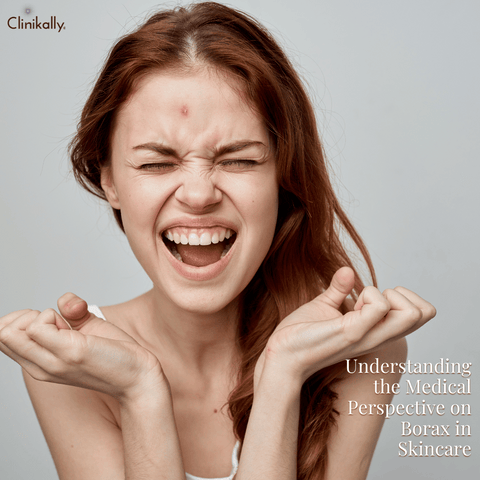
The use of borax in skincare products is a source of concern and dispute in the medical community. While borax has traditionally been used in several skincare formulas for its cleaning and emulsifying characteristics, many health professionals, dermatologists, and regulatory organisations warn against its use due to potential dangers and safety concerns.
Medical Concerns with Borax in Skincare:
-
Irritation and Sensitization of the Skin: Borax can be harsh on the skin, causing irritation, redness, and dryness, especially in people with sensitive or compromised skin. Long-term exposure to borax-containing products may result in sensitization, which makes the skin more sensitive to other irritants.
-
Toxicity and Absorption: Borax can be toxic when ingested or absorbed through the skin in large amounts. Although small quantities used in skincare products may not pose immediate harm, repeated or prolonged exposure could potentially lead to health issues.
-
Hormonal Disruption: Boron, which is found in borax, has been linked to disrupting hormonal balance, particularly thyroid function. Hormonal imbalances can have serious consequences for the body, including the skin.
-
Allergic Reactions: Some people are allergic to borax, which causes itching, hives, or a rash when it comes into contact with their skin.
-
Environmental Impact: Borax mining and production can have negative environmental consequences, such as habitat destruction and groundwater contamination, which can have an indirect impact on human health.
As with any skincare product, a patch test should be performed before using a new one, and use should be discontinued if any adverse reactions occur. If you have specific skin concerns or conditions, contact a physician for customised skincare suggestions. It is critical to prioritise safe and effective skincare practices in order to preserve healthy and bright skin.
Expert Opinions
The majority of professionals, including dermatologists, toxicologists, and regulatory bodies, are concerned about the use of borax in skincare. Many experts advise against using borax in skincare products due to the potential hazards of skin irritation, hypersensitivity, hormone disturbance, and poisoning. The emphasis is on encouraging safe and effective skincare practices from a medical and scientific standpoint. Many experts advocate for the use of well-researched and proven components in skincare formulas, especially those that have been thoroughly studied for safety and efficacy. Dermatologists and other healthcare specialists should be consulted for personalised advice on skincare routines and product selection, especially if you have sensitive skin or specific skin concerns. As scientists continue to research and assess substances such as borax, our understanding of their potential hazards and benefits may evolve. As a result, when researching skincare practices and ingredients, it is critical to rely on trustworthy sources and professional opinions.
Scientific Research on Borax
Borax has been the subject of scientific investigation to determine its properties, applications, and potential health effects. Some of the most important areas of borax research are:
-
Cleaning and Household Applications: Borax's cleaning properties and effectiveness as a household cleaner have been extensively researched. Its ability to remove stains, use it as a laundry booster, and role in cleaning various surfaces have all been studied.
-
Insecticidal Properties: Borax has been studied as an insecticide for the control of pests like ants, cockroaches, and fleas. Several studies have been conducted to investigate its efficacy in managing insect populations as well as its safety for use in pest control.
-
Medical and Pharmaceutical Applications: Studies on the potential medical applications of borax have been conducted, including its use in certain medicinal preparations in traditional medicine systems. However, it's important to note that traditional uses may not always align with current scientific knowledge or regulatory standards.
-
Preservative and pH-Adjusting Properties: Research has looked into borax's potential role as a preservative in cosmetic and skincare products, as well as its ability to stabilise formulation pH.
-
Toxicity and Safety Concerns: Numerous studies have been conducted to investigate the toxicity of borax and its potential health risks. These studies looked at different modes of exposure, such as ingestion, inhalation, and skin contact. Some studies have raised concerns about possible developmental and reproductive consequences, as well as hormonal disruption.
The Role of Borax in DIY Skincare Products
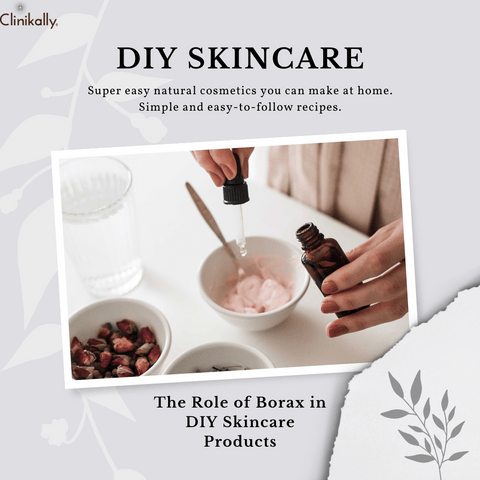
The use of borax in DIY skincare products is a source of controversy and concern. While some DIY skincare recipes may include borax due to its historical use as a cleansing and emulsifying agent, many health experts advise against using borax in homemade skincare products for a variety of reasons, including:
-
Concerns about safety: Borax is harsh on the skin and can cause skin irritation, especially for those with sensitive skin. Prolonged or frequent contact with borax-containing DIY skincare products may cause skin sensitization or other negative reactions.
-
Toxicity: When ingested or absorbed in large quantities through the skin, borax can be toxic. While the amounts used in DIY skincare recipes are small, there is still the possibility of harm, especially if the products are not properly formulated.
-
Hormonal Disruption: Boron, which is found in borax, has been linked to hormonal disruption, particularly affecting thyroid function. This raises questions about the safety of applying borax to the skin.
-
Unpredictable Formulations: DIY skincare products do not go through the same rigorous testing and quality control as commercial products. As a result, the safety and effectiveness of DIY skincare recipes may be questioned.
-
Environmental Impact: The disposal of borax-containing DIY skincare products can have negative environmental consequences, as borax can be harmful to aquatic life and ecosystems.
Given these issues, many health professionals and dermatologists advise against using borax in homemade skincare products. Instead, they advise employing products that have been well-researched and confirmed to be effective in skincare. If you want to make your own skincare products, use gentle and safe components that have been widely researched and confirmed to be helpful for skincare. Look for naturally derived plant extracts, carrier oils, essential oils, and other well-tolerated substances that can assist the skin without creating any dangers. Furthermore, before using any new DIY skincare product, perform patch tests on a small area of the skin to check for any bad effects. Consult a dermatologist if you have specific skin concerns or conditions for personalised advice and recommendations on safe and effective skincare practices.
Popular Borax-Containing Recipes
Here are a few popular borax-based DIY cleaning and household recipes:
-
DIY Laundry Detergent:
-
Ingredients: Borax, washing soda, grated bar soap (e.g., Castile soap or Fels-Naptha), essential oils (optional).
-
Instructions: Mix equal parts borax, washing soda, and grated bar soap. Use about 1-2 tablespoons per load of laundry.
-
DIY All-Purpose Cleaner:
-
Ingredients: Borax, white vinegar, water, and essential oils (optional).
-
Instructions: Mix 2 tablespoons of borax with 1/4 cup of white vinegar and 2 cups of warm water. Add a few drops of essential oil for fragrance. Transfer to a spray bottle and use as an all-purpose cleaner.
-
DIY Toilet Bowl Cleaner:
-
Ingredients: Borax, baking soda, white vinegar, and essential oils (optional).
-
Instructions: Mix 1/2 cup of borax with 1/4 cup of baking soda. Add 1 cup of white vinegar and a few drops of essential oil for scent. Pour the mixture into the toilet bowl, let it sit for a few minutes, then scrub and flush.
Please keep in mind that, while borax has been used in cleaning and household products for centuries, these recipes should be used with caution. When using borax-containing cleaning solutions, provide appropriate ventilation and keep them out of the reach of children and dogs. If you are concerned about using borax in a DIY recipe, consider substituting components that are recognised as safe for the intended usage. Because of the potential dangers and safety concerns linked with its use on the skin, it is recommended that borax be avoided in skincare products. Choose skincare products that contain well-researched and safe components, are specifically made for skin health, and have efficacy and safety tested. If you have any worries or concerns about using borax-containing products or preparing DIY concoctions, seek personalised guidance from a dermatologist or healthcare expert.
Safety Measures for DIY Skincare
To preserve your skin and overall health, it's critical to prioritise safety when making DIY skincare products. Researching chemicals, patch testing, avoiding harsh or irritating components, correct storage, hygiene, using measurement instruments, preventing contamination, labelling, educating yourself, consulting professionals, and avoiding borax are some safety precautions to take while manufacturing DIY skincare products. Keep in mind that DIY skincare products lack the thorough testing and stability tests that commercial products undergo. While DIY can be fun and cost-effective, it's important to understand the limitations and potential risks of homemade skincare products. When in doubt, use professionally developed skincare products from recognised brands that have been safety tested and are appropriate for your skin type and issues.
Exploring Alternatives to Borax in Skincare
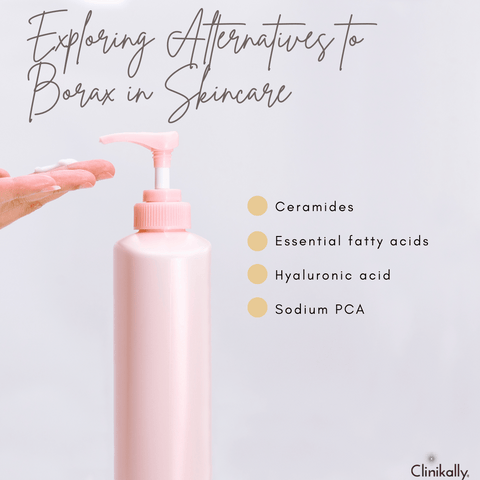
There are numerous safe and effective borax substitutes that you can use in your skincare formulations. Here are a few popular alternatives:
-
Gentle Cleansing Agents: Instead of using borax in cleansers, use milder surfactants such as cocamidopropyl betaine, decyl glucoside, or lauryl glucoside. These ingredients are gentle on the skin while effectively removing dirt and impurities.
-
Natural Thickeners: When it comes to emulsification and thickening in skincare products, natural alternatives such as xanthan gum, guar gum, or acacia gum should be considered. These ingredients can aid in the stabilisation of formulations without the risks associated with borax.
-
Alpha Hydroxy Acids (AHAs) and Beta Hydroxy Acids (BHAs): Instead of using borax as an exfoliant, try AHAs such as glycolic acid or BHAs such as salicylic acid. These chemical exfoliants remove dead skin cells, promote cell turnover, and improve skin texture without being as harsh as physical exfoliants such as borax.
-
Plant-Based Preservatives: Use natural preservatives such as radish root ferment, honeysuckle extract, or vitamin E to preserve your DIY skincare products. These ingredients can help your products last longer without the risks associated with synthetic preservatives.
-
Essential oils: Instead of synthetic fragrances, consider using essential oils for added fragrance or therapeutic benefits. Make sure to dilute essential oils properly and choose those that are safe for topical use.
-
Natural Emollients: Instead of borax, use natural emollients such as shea butter, cocoa butter, coconut oil, or jojoba oil in creams and lotions. These ingredients moisturise and nourish the skin without causing irritation.
-
Natural Antioxidants: Use natural antioxidants like vitamin C (ascorbic acid) or vitamin E (tocopherol) to protect your DIY skincare products from oxidation. These ingredients can help your formulations last longer.
-
Aloe Vera Gel: Aloe vera gel is a soothing and hydrating ingredient that can be used as a base in DIY skincare products such as toners, serums, and moisturisers.
Natural Alternatives
There are a plethora of natural options that you can use in your skincare recipes. These components are frequently well-tolerated, effective, and free of the possible hazards associated with synthetic or harsh compounds. Here are some popular natural alternatives for different types of skincare:
-
Cleansing Agents:
-
Coconut oil: Excellent for makeup removal and gentle cleansing.
-
Honey: A natural humectant with antimicrobial properties that is suitable for gentle cleansing.
-
Exfoliants:
-
Ground oatmeal: Removes dead skin cells by acting as a mild physical exfoliant.
-
Fruit enzymes: Papaya and pineapple contain natural enzymes that gently exfoliate the skin.
-
Moisturizers:
-
Shea butter: A rich emollient that moisturises the skin deeply.
-
Jojoba oil: Its composition is similar to that of the skin's natural oils, making it an excellent moisturiser.
-
Toners:
-
Witch hazel: A natural astringent that helps balance the pH of the skin and tighten pores.
-
Rose water: Calming and hydrating, ideal for sensitive skin.
-
Antioxidants:
-
Green tea extract: High in antioxidants, green tea extract protects the skin from environmental damage.
-
Vitamin C (ascorbic acid): Aids in skin brightening and free radical neutralisation.
-
Anti-Inflammatory Ingredients:
-
Aloe vera gel: Soothing and anti-inflammatory, ideal for soothing irritated skin.
-
Chamomile extract: Known for its anti-redness and calming properties.
-
Natural Preservatives:
-
Fermented radish root: A natural antimicrobial and preservative agent.
-
Leucidal (leuconostoc/radish root ferment filtrate): A natural preservative derived from fermented radishes.
-
Natural Fragrances:
-
Essential oils: Provide natural fragrances as well as some additional skin benefits. Ensure to dilute properly and use skin-safe oils.
Before utilising new natural components on your skin, always perform patch tests to check for any adverse effects. Furthermore, use these natural alternatives with prudence and at appropriate dosages. Although natural components are generally well-tolerated, individual sensitivities can differ, so it's critical to figure out what works best for your skin. To ensure the safety and stability of DIY skincare products made with natural ingredients, correct hygiene, storage, and formulation practises must be followed. Consult a dermatologist or skincare specialist if you have specific skin concerns or conditions for personalised advice and help on utilising natural products in your skincare routine.
Chemical Alternatives
Chemical alternatives in skincare refer to ingredients that are synthetically derived but are considered safe and effective for topical use. These chemicals are often well-researched and widely used in commercial skincare products. Here are some chemical alternatives commonly used in skincare formulations:
-
Surfactants/Cleansing Agents:
-
Sodium Lauroyl Sarcosinate: A gentle surfactant that cleanses the skin without removing its natural oils.
-
Cocamidopropyl Betaine: A coconut oil-derived gentle and effective cleanser.
-
Chemical Exfoliants:
-
Glycolic Acid: An AHA that exfoliates the skin and improves skin texture.
-
Lactic Acid: Another AHA that exfoliates and hydrates the skin gently.
-
Preservatives:
-
Phenoxyethanol: A widely used and well-tolerated preservative that extends the shelf life of skincare products.
-
Ethylhexylglycerin: A plant-derived antimicrobial preservative.
-
Emollients and Moisturizers:
-
Glycerin: A humectant that attracts and retains moisture in the skin.
-
Caprylic/Capric Triglyceride: A lightweight emollient derived from coconut oil that is suitable for all skin types.
-
Stabilizers and Emulsifiers:
-
Cetearyl Alcohol: A fatty alcohol that stabilises and thickens formulations.
-
Glyceryl Stearate: An emulsifier that aids in the combination of oil and water-based ingredients.
-
Antioxidants:
-
Tocopherol (Vitamin E): An antioxidant that protects the skin from free radical damage.
-
Ferulic Acid: Improves the stability and efficacy of vitamins C and E, making it a potent antioxidant blend.
-
Skin Brightening Agents:
-
Niacinamide: A form of vitamin B3 that helps even out skin tone and improves the appearance of hyperpigmentation.
-
Anti-Inflammatory Ingredients:
-
Allantoin: Soothes and calms irritated skin, promoting skin healing.
It is critical to understand that chemicals are not necessarily bad or dangerous. Many synthetic compounds used in cosmetics are well-regulated and safe. Synthetic alternatives are commonly used by cosmetic chemists and formulators because they can be precisely controlled, resulting in consistent and effective results.
Concluding the Debate: Should Borax Be Part of Your Skincare Routine?
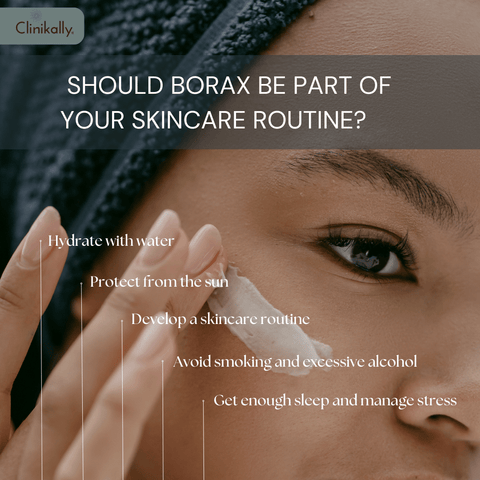
Borax has traditionally been utilised in several skincare products due to its cleaning and emulsifying characteristics. However, there are a number of possible dangers and safety concerns related to borax, prompting many health experts, dermatologists, and regulatory organisations to advise against its usage in skincare. Concerns about borax in cosmetics include skin irritation, hypersensitivity, possible toxicity, hormone disturbance, and environmental effects. While some ancient uses of borax were quite safe, advances in safety standards and modern knowledge have led health professionals to advise against using it in beauty products. Given these risks, as well as the availability of safer and better-researched alternatives, it is generally recommended that you avoid using borax in your skincare routine. Choose skincare products that contain ingredients that have been proven to be safe, mild, and effective through scientific research and safety studies. To maintain a healthy and bright complexion, prioritise patch testing, using safe chemicals, consulting a dermatologist, adhering to safety precautions, and being environmentally conscious.



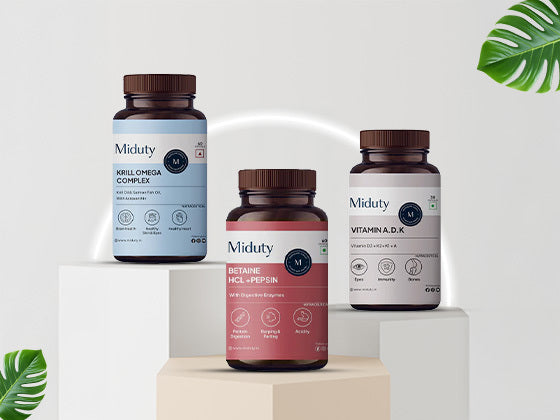






































1 comment
Muhamood
It’s a good well searched article that has widened my knowledge about possible alternatives about Borax.
Thanks for the update.
It’s a good well searched article that has widened my knowledge about possible alternatives about Borax.
Thanks for the update.